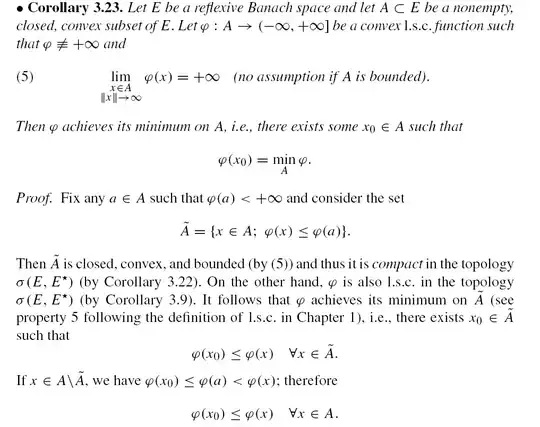I quote here the proof of a result given in Haim Brezis Functional Analysis, Sobolev Spaces and partial differential Equations:
I haven't been able to conclude where exactly is this hypothesis used:
A is closed and convex.
As far as I understand, one concludes the existence of minimum in the convex, closed and bounded set $\tilde{A}$, but this is done without using the fact that $A$ is closed and convex,
The fact that $\tilde{A}$ is closed and convex simply follows from the lower semicontinuity and convexity of the function $\varphi$ and we obtain the existence of minimum in the set $\tilde{A}$ Then, as $\tilde{A} \subset A$ we obtain the minimum in the whole $A$.
